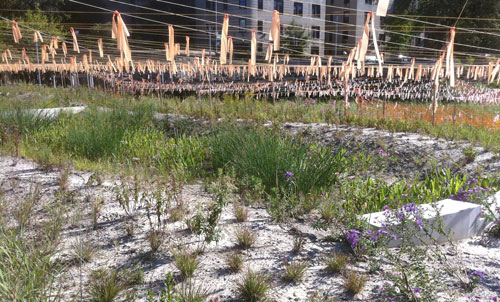
Eric Rothstein was profiled in Urban Omnibus in January 2015 in an article entitled “Mitigate, Design, Restore: A Conversation on Hydrology and Habitat.”
In the interview, Mr. Rothstein discusses how he chose his line of work, some of eDesign Dynamics projects and collaborations in NYC, and the benefits - and challenges - of green infrastructure and habitat restoration.
Read an excerpt from the interview below:
How does restoration in an urban area like New York City differ from elsewhere?
Traditional restoration work is often led by ecologists and biologists because they know what they need to create. But in the urban, post-industrial setting, the foundations of ecosystems are basically screwed up. These soils are high in nutrients and pH because of all the concrete, so they favor weedy species instead of our native species, which thrive in lower nutrient and more acidic soils. Then there is the poor water quality of the runoff, which includes oil, metals, and various other contaminants. Aligned with that is the issue of “flashy” hydrology: we get much more runoff and we get it a lot faster. So before you can establish a sustainable ecosystem, you need to fix the soils, the hydrologic regime, and the water quality.
Do you have any particular hopes for further integration of ecological ideas into urban development?
To be truly green would be to design everything so that on balance it has a net positive effect on the planet. It’s really hard to offset the negative impact of a building, because of all the materials brought in and the pollution caused by construction and people living there. Most people say that the next best step is to do everything that’s feasible within the budget to have as little an impact as possible. I still struggle with the building scale. With park development, however, you’re taking something with no habitat value and creating both that value and an amenity for the community.
The full article can be found HERE >
